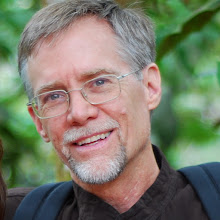I recently viewed this TED Talk by David Eagleman on the brain and perception.
While watching it, especially the first 4:30 of it, I was reminded of recent research into where and how the brain processes mystical experiences. From time immemorial, people have reported such experiences and striven to sharpen the ability perceive them, through meditation, contemplation, prayer, etc. Granted, there is a debate going on as to whether we are actually experiencing a spiritual reality or merely responding to chemical stimuli created by the brain. This is like arguing about whether what we see, hear, taste, smell, and feel actually exists or is just a product of our brain chemistry. Research shows that all perception––the brain’s interpretation of input––requires training, whether from birth or from the time a cochlear implant is activated.
There is no reason to believe that the ability to perceive spiritual realities should require any less training. Granted, our perception of reality is not reality per se, but just our interpretation of it, but that is no reason to believe that reality does not exist, as the post-modernists would have it. And it is through triangulating or cross-checking other people’s perceptions/interpretations of that reality that we perfect our insights into its features. Interestingly, throughout the millennia of recorded history, people of all spiritual paths and religions have reported similar experiences. This suggests that something real exists that is being perceived, even if “as through a glass, darkly.” The fact that many have not experienced it is no more a proof of its non-existence than blindness or deafness is evidence of the absence of light or sound.
The essence of a chair is a combination of legs, a seat and a back support, regardless of their varied materials, colors, forms, sizes, etc. The essence of science is the search for knowledge, notwithstanding the diverse disciplines, institutions and power structures, tools, approaches and objects of study, opposing schools of thought and paradigms. Likewise, the essence of all religion––regardless of their diverse histories, outer expressions, interpretations, symbolisms, organizational arrangements, etc.––is the mystical experience, broadly defined as a perception of and relationship of love with spiritual reality, the transcendent, the divine, which is one of the inherent faculties that make us truly human.
What if it were possible to strip that essence of religion of the shackles of all institutional power structures, of all authoritative orthodoxy, of all division into conflicting interpretations, of all imposition of rigid outer forms and trappings? What if religion could make a clean start from its inner essence––that relationship of love with the divine which is available to all; and upon that firm foundation added a search for truth and meaning that was free and independent but also interactive and synergistic; and went from there to build a loving, supportive community life that not only accepted and embraced but actually sought out and fostered an ever-richer diversity of cultural and ethnic expressions; then fully tapped the immense energies released by such devotion, insight and loving relationships and channeled them into selfless acts of collective service to the upliftment and empowerment of all humankind; and finally administered the resulting material and human resources for the advancement of civilization through a process of bottom-up consultation, learning from the lessons of action, and democratically-elected institutions?
That is what the Bahá'í Faith is all about or, better said, what the Bahá'í Community is striving to put into practice and accomplish. I strongly urge anyone who has managed to read this far to investigate the Bahá'í Faith proactively and, if you find that it resonates with something deep within you, to join us in making this dream of a new paradigm of religion a palpable reality in the world.



No comments:
Post a Comment